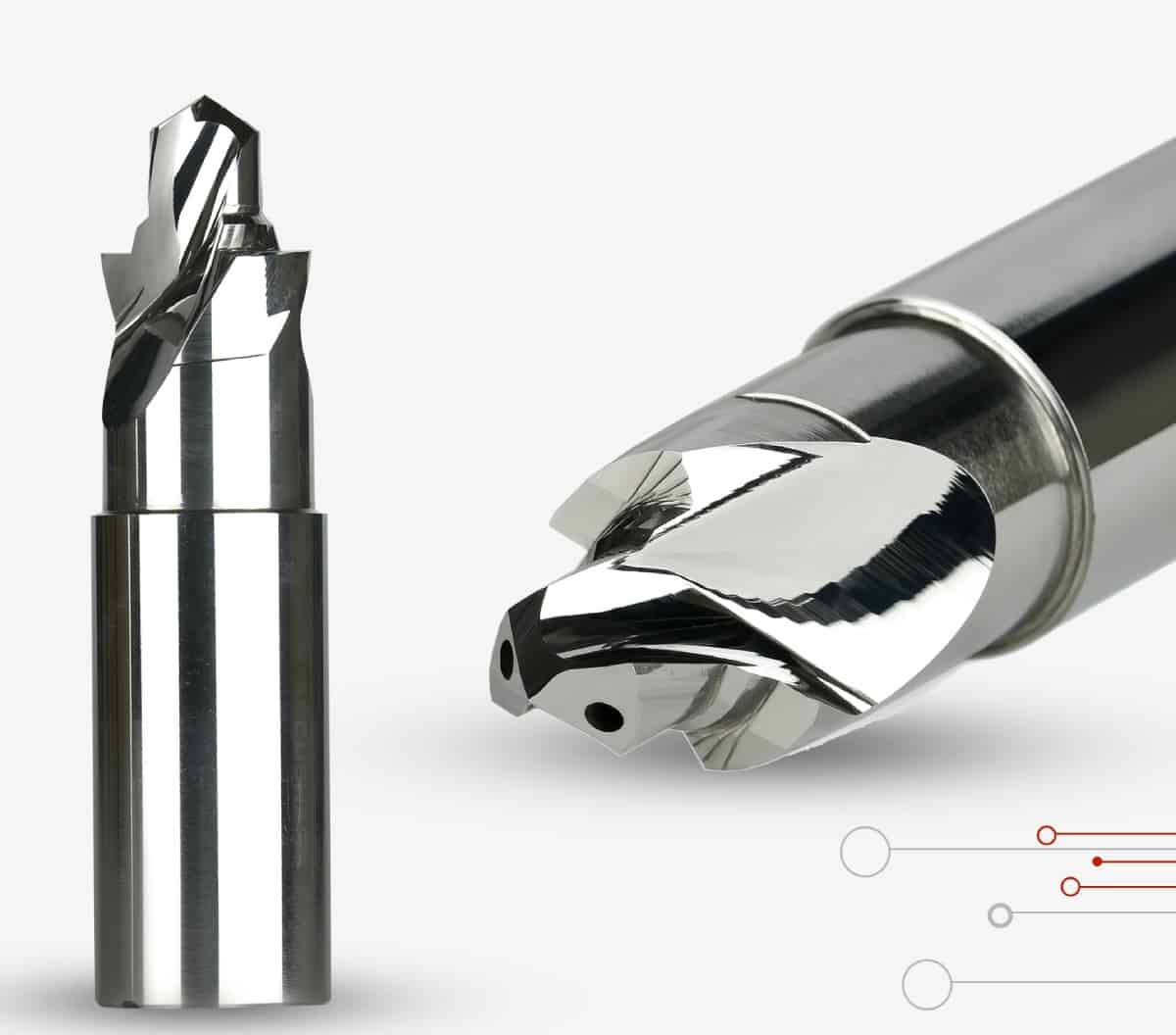Drilling is one of the most popular machining procedures in the manufacturing Industry.
Micro drilling is a drilling technique used in a wide range of industries. When it comes to micro
drilling, however, the construction industry is a pioneer. Micro drilling is a subdivision of the overall drilling procedure. Many of the components and ideas are identical to those used in standard-sized drilling operations, but the results are vastly different.It can make holes that are millimeters and micrometers in diameter. It has smaller drill bits with appropriate head and flute designs to Ensure that the work is done correctly.
In the field of machining, micro drilling is a very popular tool. From the length of your flute to the
drills head tip, you must inspect everything. You must be precise when micro drilling to ensure that there is no space for error. To drill a small hole correctly, you must understand the components and a variety of subtleties. Using a micro drilling tool demands a skilled approach.
Micro hole drilling is becoming increasingly used in precise manufacturing. Micro Drills are essential in the industrial business. The drill point geometry, drill material, and work piece material are only a few of the parameters that determine Micro Drill performance, with the drill point geometry being the most important.
Recognize the Micro Drilling Process
The procedure for Micro Drilling is broken down into several steps, which are listed below:
1. Research the material
2. Recognize the coolant
3. Choosing the Right Coolant for Micro Drilling
First and foremost, you must be quite familiar with your equipment and have a basic understanding of it. In this scenario, you will need to do a lot of research and become an expert on how to use a drilling machine or cut metal. There is a lot of misinformation out there when it comes to micro drilling in general, from how to handle the micro tool to what depth of hole you require to what the drill’s entry point is.To acquire the finest results, you’ll need to arm yourself with extensive research.
The next stage is to use the coolant after conducting thorough study and comprehension of the material’s requirements. The drill cycle is the most crucial phase when designing a micro drilling. To get the best drilling results, you can use a variety of tactics based on the information provided, but the one thing you’ll need is a striking cycle.
So, in order to make the perfect micro drill, you must establish a strategy and conduct thorough study. As certain that the equipment passes through the hole with sufficient distance and time to receive coolant and clean the chip.
In the micro-drilling process, coolant serves as a vehicle for heat transfer, while lubrication is the most significant element. Coolants perform admirably under normal circumstances, but Micro drilling is quickly shattered. Water-soluble does something really amusing that we don’t notice. When the coolant in the bottom of your hole has filled up and the tool has entered the hole, It does, in fact, become pressured. And, in the end, it triumphs over the tool. In such cases, a mistingsystem with thin oil that flows precisely can be used for your operation.
Industrial micro drilling is a subset of the drilling process that uses many of the same components and concepts as standard-sized drilling operations, but the significant difference is in the outcomes. Micro drilling may create holes with dimensions measured in millimeters and micrometers, and typically with tight tolerances enabled by high machining precision.
Smaller drill bits with specialised head and flute designs are used in micro drilling equipment to Match the meticulous accuracy of its job.
Micro drilling features different rotation and cycle stages, in addition to size considerations. Micro drilled items can contain anywhere from one to hundreds of microscopic holes because to these properties. Applications that require accurate liquid or gas movement, small diameter tubing, and specific types of extrusion dies frequently use such components. Micro drilling can be utilized in conjunction with CNC automation systems and lathe procedures.
Micro Drill:
Micro Drills are the high performance drills that are utilized extensively in the medical, aerospace and machining industries. These high precision drills have a longer and more consistent tool life, eliminate peck drilling, and deliver precise finished hole position values. Designed with fine filtering devices for CNC drilling applications.
Micro Drilling procedures have been utilised to make micro holes in a variety of applications, Including micro dies and moulds, fuel injection nozzles, timepieces, bearings, and printed circuit Boards. It’s also gaining traction in a variety of precise manufacturing businesses. Experiments are Carried out to see how effective drilling processes are.
Micro drills that are precisely machined, especially those composed of strong, nano-grade carbide and small enough to drill correctly through a single hair follicle, aren’t cheap. Only a few companies make these, and most of the time, these tiny micro drills are made on Demand as carbide drills for custom orders.
Due to a considerable increase in the use of miniaturized products and equipment, demand for micro drilling with a diameter ranging from a few microns to several hundred microns is developing in industries such as Aerospace, Automotive, and Medical Equipment etc. Industries.
Micro Drill Bits:
The smallest micro Drill bits are spade bits, which have a cutting edge produced by two flat planes Rather than a pointed tip. A “chisel edge” cutting design removes material from a hole at a negative Angle of extrusion.
Because it lacks a sharpened point, the workpiece’s surface texture and slope might cause the drill Bit to drift or enter the material at an angle, which must be corrected for with precise tool guidance. Spiral flutes are uncommon in spade drills, which might result in smoother hole walls while also Making debris removal more difficult.
Bits with a chisel edge are typically longer than their drilling diameter, resulting in a lot of push Against the drilling axis. This means that the force along the chisel edge is smaller than the force Along the other segments of the bit when the cutting edges enlarge the diameter of the initial hole.
Micro drill bits are typically made of a cobalt-steel alloy, which is very affordable, or tungsten carbide, which is stronger and more durable.
Micro Drill Spindles:
The majority of micro drill spindles have a vee-block construction, which is a common drilling setup for handling round or curved work pieces. A drill bit is attached to a retaining piece, or mandrel, that is fixed between diamond bearing pads in micro drilling.
To reduce vibration, the drill is intended to be concentric along an axis that aligns as closely as Possible with the mandrel. The drilling mandrel is held against the diamond pads by a driving belt That Extends from the mandrel to an external motor.A sensor is sometimes included to measure Drilling force and bit wear.
The Micro Drilling Cycle:
The “peck cycle,” in which the drill bit is periodically inserted and removed from the hole to clear out accumulating material, is used by most micro drills. This is frequently supplemented by the use of a Cutting fluid, such as oil mist, to blow larger chips out of the hole.
If the debris isn’t removed, especially the pieces larger than five micrometres, the drill’s thrust force and axial pressure will increase. Partial chip clearing, on the other hand, is better for softer materials because total debris removal can cause a tapered hole to form.
Parameters of Speed and Rotation:
A micro drilling machine’s speed and feeding rate are determined by the project’s needs, drill size, And work piece material. Drilling plastics may necessitate lower rates to avoid fracture or melting. Higher speeds are rarely used in micro drilling because allowing the drill to loiter at the bottom of the hole at high rpm can promote material hardening.
Micro drilling is unable to make holes with a flat base due to the dimensions of the drill piece. Because enlarging the hole’s diameter to its entire range requires the drill to penetrate around one-third of the opening diameter past the depth of the base, a thick plating substrate is sometimes Necessary to generate cylindrical micro holes. Drilling on a curved surface may also necessitate the use of a small pilot hole to keep the drill from wandering.
Micro Drilling is widely used in modern industry, particularly in the electronics industry, For machining printed circuit boards(PCB), making air bearings and bushings, EDM tooling, nozzles, microwave components , gas and liquid flow and other applications, medical devices , optical components and so on.
Features:
- The flute design is unique, allowing for excellent chip evacuation.
- Large oil holes and a hollow shank design allow for a higher volume of coolant flow.
- The tool’s straightness and stability are supported by a double margin arrangement.
- Reliable High quality hole.
- Sharp strong and straight cutting edges for reliable drilling performance.
- Short chips are generated in the drill operation due to the unique face shape, ensuring great drill hole accuracy.
- Design with a double margin for greater stability and a better hole surface quality.
- Micro drills designed for added heat and wear resistance.This eliminate built-up edges and edge chipping, extending tool life greatly.
Applications:
- Automotive Industry
- Medical Equipment industry
- Aerospace
- Die and Mould Industry
- Watch Industry
- Electronics
- Bearing Industry
- Machining Industry
- Mild steel, low Carbon steel, High Carbon steel, Alloy steel, Hardened steel, copper alloy , titanium alloy ,Inconel , Aluminum ALLOY Casting.


